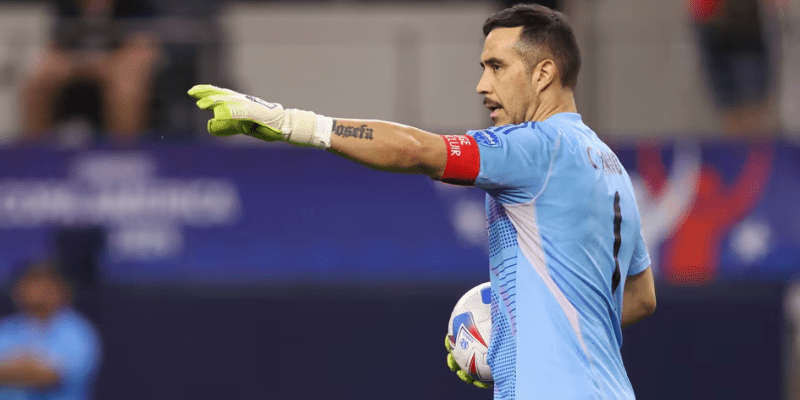Copa América has been graced by legends — and some of them played well beyond the conventional “prime age.” In this article, DiorDribble will take you on a time-stamped journey through the oldest players to play in Copa America, offering the records, the stories, and the surprising names who defied Father Time on the continental stage.
What defines “oldest” in Copa América history

When we talk about “oldest,” there are a few approaches:
- Absolute age at the moment of playing in a match (in years, months, days).
- Oldest outfield player
- Oldest by role (defender, midfielder, forward)
- Historical vs. modern era distinctions
Because Copa América reaches back to the early 20th century, early records are sometimes incomplete. Yet modern sources and statistics allow us to reliably track recent benchmarks.
Below, we’ll list key figures who hold—or have held—age records in the tournament, and then explore interesting edge cases and trends.
Top age records in Copa América

The overall record: Claudio Bravo (2024)
In the 2024 edition, Claudio Bravo set a new benchmark for age in Copa América. At 41 years and 69 days, he became the oldest player ever to play in a Copa América match. He started Chile’s opener against Peru, kept a clean sheet, and thus overtook the prior record-holder.
Bravo’s feat is especially meaningful because he didn’t just sit on the bench — he played and performed under pressure.
Before Bravo: Carlos Trucco’s long-standing benchmark
Before 2024, the age record was held by Bolivian goalkeeper Carlos Leonel Trucco. He played in the 1997 final at 39 years and 322 days — a remarkable feat at the time. That record stood for 27 years until Bravo surpassed it.
Trucco’s longevity had made him a beloved veteran in Bolivia, and his ability to command the goal in critical matches earned him respect across South America.
The oldest outfield player: Paolo Guerrero in 2024
While the goalkee. In the 2024 Copa América, Paolo Guerrero made history as the oldest outfield player to appear in the competition. He entered as a substitute at 40 years, 172 days.
Thus, Bravo holds the overall age record, and Guerrero holds the outfield record — both set in 2024.
Honorable mentions and close calls
While they may not top the charts, several other players deserve recognition for their longevity in Copa América:
- Luis Suárez featured in Copa America 2024 at age 37 (around 37 years, 149 days) — among the older forwards in modern editions.
- Earlier tournaments had players nearing 38 or 39 in key roles, but data is patchy. Transfermarkt does maintain lists of oldest players, but few cross the 38–39 threshold.
Also worth noting: in older eras, fewer substitutions and less specialization sometimes forced older legends to stay in the field longer — but many of those matches lack detailed age notation.
Why do these records matter — and why now?

These age records carry more than just trivia weight — they reveal deeper truths:
- Experience still counts
- At 41, Bravo’s presence wasn’t ceremonial — he brought leadership, organization, and composureer fire. For a national side in tournament mode, that value can be priceless.
- Evolving sports science & conditioning
- Modern advances in sports medicine, nutrition, recovery, and training allow elite players to extend their peak years. Bravo and Guerrero are emblematic of that shift — they wouldn’t survive at 41 or 40 in earlier decades.
Narrative & symbolism
- For fans, the image of a veteran taking the field — especially in a high-stakes international stage — carries emotion and inspiration. It’s a living bridge. Benchmarking the edge
- Records like “oldest ever” force us to examine where the boundaries lie. Could someone push 42, 43 in a future Copa América? Perhaps — but the demands of elite international competition make it a tall order.
Patterns and observations
Looking across decades, certain patterns emerge:
- The oldest players in Copa América are almost always goalkeepers. Their more stationary positioning allows longer viability.
- Outfield players rarely cross 38 in major continental tournaments, making Guerrero’s 2024 entry particularly remarkable.
- Older players often assume leadership, mentoring, or motivational roles in squads, even if they aren’t full-time starters.
- Past decades had fewer matches and fewer substitutions, meaning even veteran players had to slog through entire games — making Trucco’s feat especially impressive for his era.
Limitations, gaps, and caveats
- Early record-keeping: In early 20th-century tournaments, age data was not always documented precisely, limiting certainty about older participants.
- Definition of appearance: Subbing in for few minutes still counts, but purists might debate minimum minutes played. We adopt the standard “played in a match” definition.
- Naturalization and late debuts: Some players changed nationality or debuted late, complicating record lists.
- Older matches vs. current century: Many records are distinguished by “in this century” — that’s why Bravo is often called “oldest in the 21st century.”
What might the future bring?
Could a future Copa América see someone break 42 years, or even challenge Guerrero’s outfield mark by pushing into late 30s/40? It isn’t impossible, but the margin narrows:
- The physical demands of international tournament play are brutal — high tempo, quick transitions, recovery pressure.
- Team managers often prefer agility, speed, and youth — especially in wide or midfield roles.
- Any veteran would need to maintain top-level fitness and contribute real field value, not just nostalgia.
Still, Bravo’s 2024 record raises the bar, and Guerrero’s presence shows that outfield longevity is not dead. It sets a benchmark challengers will aim for.
Conclusion
The oldest players to play in Copa America narrative is both a record archive and a human drama. Bravo’s 41 years and 69 days in 2024 reset the limits of age in the tournament, erasing Trucco’s long-standing 39-year benchmark. Meanwhile Guerrero’s 40+ entry rewrote the outfield record. These stories remind us that, in football, experience and willpower can still carry you beyond typical expectations.
At DiorDribble, we believe these age-defying moments add soul to the sport: they’re proof that sometimes, age is just a number.
If you enjoyed this deep dive, share with fellow fans, bookmark for future updates (who’ll be the next to hit 42?), and keep an eye on our site for more record stories, player profiles, and stat breakdowns.






